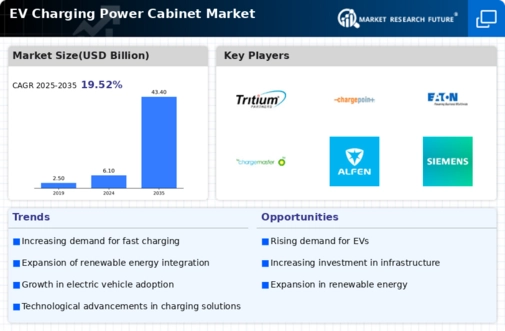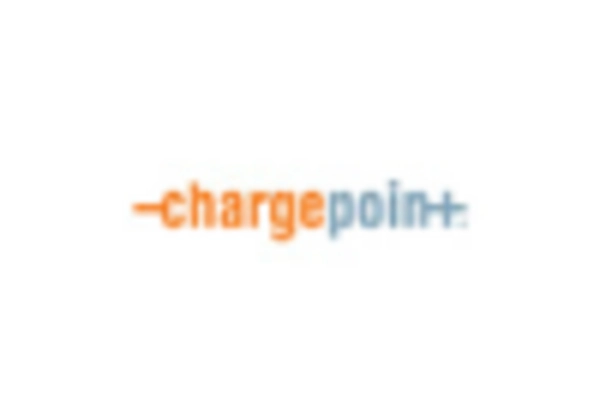Rising Demand for Electric Vehicles
The increasing adoption of electric vehicles (EVs) is a primary driver for the EV Charging Power Cabinet Market. As more consumers and businesses transition to EVs, the need for efficient and reliable charging infrastructure becomes paramount. According to recent data, the number of electric vehicles on the road is projected to reach over 30 million by 2025, significantly boosting the demand for charging solutions. This surge in EV adoption necessitates the installation of advanced charging power cabinets, which are essential for providing the necessary power levels for fast and efficient charging. Consequently, manufacturers in the EV Charging Power Cabinet Market are likely to focus on developing innovative solutions to meet this growing demand.
Expansion of Charging Infrastructure
The expansion of charging infrastructure is a crucial driver for the EV Charging Power Cabinet Market. As urban areas grow and the number of electric vehicles increases, the demand for accessible and convenient charging stations rises. This trend is prompting investments in public and private charging networks, which are essential for supporting the widespread adoption of electric vehicles. Recent reports indicate that the number of public charging stations is expected to double by 2025, further emphasizing the need for robust charging power cabinets. Consequently, this expansion creates opportunities for manufacturers to supply innovative charging solutions that cater to diverse consumer needs.
Government Regulations and Incentives
Government regulations aimed at reducing carbon emissions and promoting sustainable transportation are significantly influencing the EV Charging Power Cabinet Market. Many countries have implemented stringent emissions targets, which encourage the adoption of electric vehicles and, by extension, the infrastructure needed to support them. For instance, various governments offer incentives for the installation of EV charging stations, including tax credits and grants. This regulatory environment not only fosters investment in charging infrastructure but also drives innovation within the EV Charging Power Cabinet Market. As a result, manufacturers are compelled to enhance their product offerings to comply with evolving standards and capitalize on available incentives.
Increased Consumer Awareness and Acceptance
Increased consumer awareness regarding environmental issues and the benefits of electric vehicles is driving growth in the EV Charging Power Cabinet Market. As consumers become more informed about the advantages of EVs, such as lower operating costs and reduced carbon footprints, the demand for charging infrastructure is likely to rise. Surveys indicate that a significant percentage of potential EV buyers consider the availability of charging stations as a critical factor in their purchasing decisions. This heightened awareness encourages investments in charging solutions, prompting manufacturers in the EV Charging Power Cabinet Market to enhance their offerings and ensure they meet consumer expectations.
Technological Innovations in Charging Solutions
Technological advancements in charging solutions are reshaping the EV Charging Power Cabinet Market. Innovations such as ultra-fast charging technology and smart charging systems are becoming increasingly prevalent. These advancements allow for quicker charging times and improved energy management, which are critical for enhancing user experience and operational efficiency. For example, the introduction of high-power charging cabinets capable of delivering over 350 kW can significantly reduce charging times for electric vehicles. As technology continues to evolve, manufacturers in the EV Charging Power Cabinet Market are likely to invest in research and development to create more efficient and user-friendly charging solutions.


















Leave a Comment